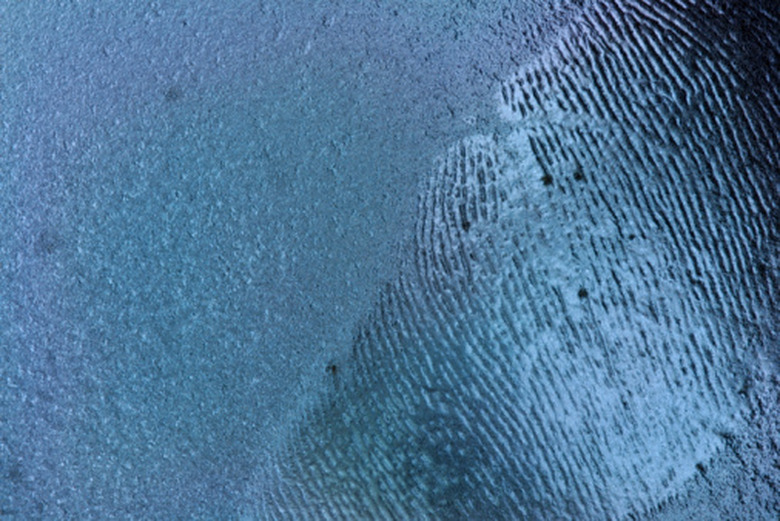Ingredients In Fingerprinting Powder
The skin on the fingers, palms and soles of the feet is known as friction skin. These areas have no hair or oil glands and constantly produce perspiration, as well as obtain grease and oil from other areas of the body. When friction skin touches an object, perspiration and oils are left behind, leaving a latent print. Fingerprint powder is used to make these prints visible. Various ingredients are used in fingerprint powder.
White Fingerprint Power
White Fingerprint Power
A common white powder is made from haddonite white, which is a dusting compound made from titanium dioxide, kaolin and French chalk or from titanium dioxide, purified talc and kadin lenis. Lanconide, another white powder, is made from zinc sulfide, zinc oxide, barium sulfate, titanium dioxide, bismuth oxychloride and calcium carbonate. Other white powders include titanium dioxide, white tempura or chalk. Mercury chalk is no longer used as a white fingerprint powder as mercury presents a serious health risk.
Black Fingerprint Powder
Black Fingerprint Powder
Black fingerprint powder is used on light-colored surfaces. Common ingredients in black power include graphite, charcoal, lampblack, photocopier toners and anthrocene. Powders may also combine a number of compounds. Dactyl black is made from a combination of graphite, lampblack and gum acacia. Haddonite black is similar to dactyl black but uses powdered acacia instead of gum acaca. Another black powder is called Dragon's blood; it uses the powdered resin of the Daemonorops draco plant.
Other Ingredients
Other Ingredients
Additional inorganic materials that are added to fingerprint powders include aluminum dust, fluorescent powders, magnet powders, lycopodium and other metal powders. Additional items commonly found in fingerprint powder include:
- lead
- mercury
- cadmium
- copper
- silicon
- titanium
- bismuth
Lead and mercury are less common, as both materials present a health hazard.
Application
Application
Fingerprint powder is typically gently brushed onto an area, or it is poured onto an area and excess powder is blown away. Magnetic powders use magnetism to keep prints intact; a brush cannot damage any latent prints. Other techniques include using superglue to bind to latent prints and dusting the area afterward to develop a well-defined print.
Cite This Article
MLA
Carpenter, Michael E. "Ingredients In Fingerprinting Powder" sciencing.com, https://www.sciencing.com/ingredients-fingerprinting-powder-8592401/. 24 April 2017.
APA
Carpenter, Michael E. (2017, April 24). Ingredients In Fingerprinting Powder. sciencing.com. Retrieved from https://www.sciencing.com/ingredients-fingerprinting-powder-8592401/
Chicago
Carpenter, Michael E. Ingredients In Fingerprinting Powder last modified March 24, 2022. https://www.sciencing.com/ingredients-fingerprinting-powder-8592401/
